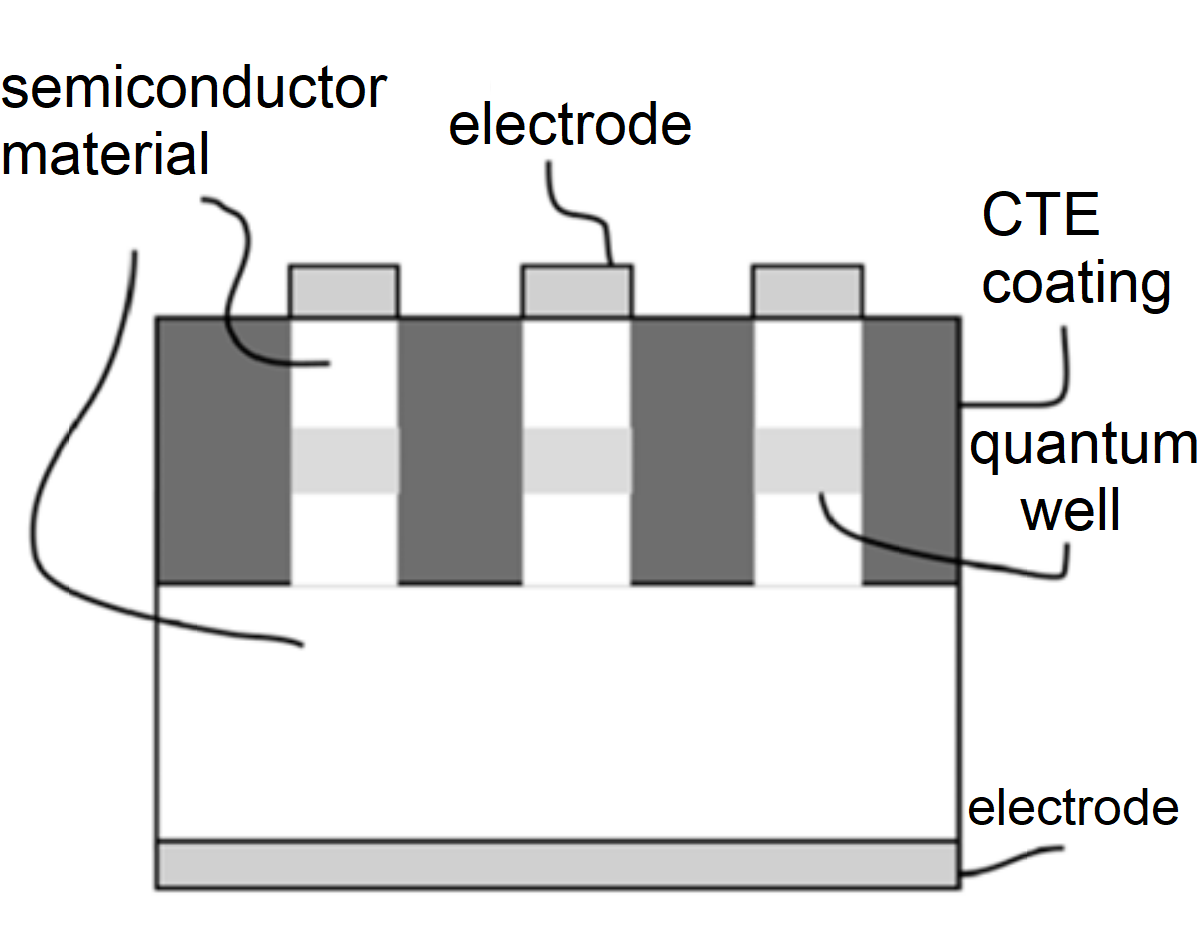LEDs and Laser Diodes have emission wavelengths that are inherently temperature dependent and that is undesirable for most applications. Current approaches to resolving this issue involve engineering the effective bandgap energy through compositional control. Since the composition controls properties other than emission wavelength it is not possible to optimize them as well as making the emission wavelength athermal.
This invention proposes to engineer the temperature dependence of the emission wavelength of LEDs and laser diodes. The approach is to use a strain-inducing coating to counteract the intrinsic temperature coefficient of the emission wavelength of the LED or laser diode device thereby rendering it athermal. This invention avoids additional complexity, size, weight and power dissipation of external temperature control schemes.
Image Caption: Schematic showing mismatched coefficient of thermal expansion (CTE) coating between semiconductor material pillars that contain quantum wells. Electrodes are located on top of each pillar and at the bottom of the semiconductor material.
- Controls the emission wavelength temperature coefficient without affecting other parameters.
- Creates an athermal device without affecting other compositionally dependent parameters.
- Doesn’t require complex and costly external temperature stabilization schemes.
- Avoids growing size, weight and power requirements.
- Simplifies the fabrication process and improves overall yield.
- Avoids lattice-mismatched compositional strains that could end up cracking the device.
Higher power laser diode sources for lithography and metrology, biotechnology and materials processing applications.
Current stage of technology development: TRL 3-4
LLNL has patent(s) on this invention.
U.S. Patent No. 10,992,105 Strain Control in Optoelectronic Devices published 4/27/2021


